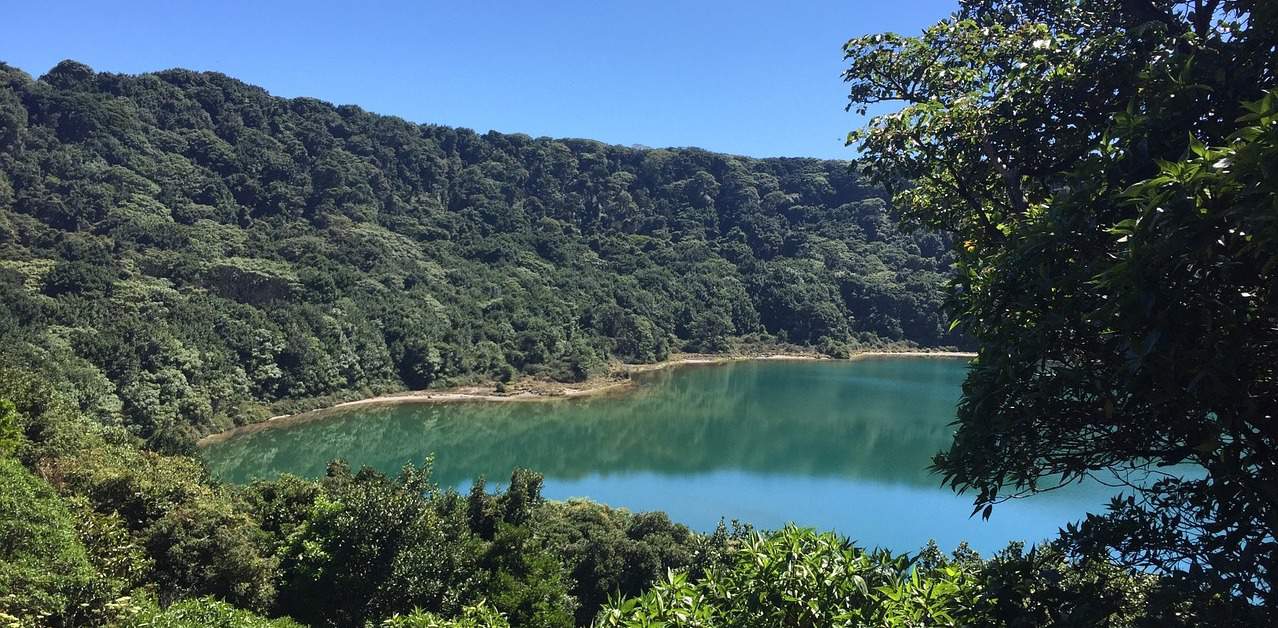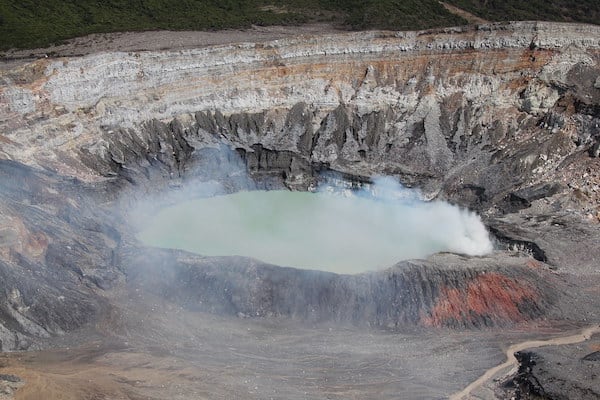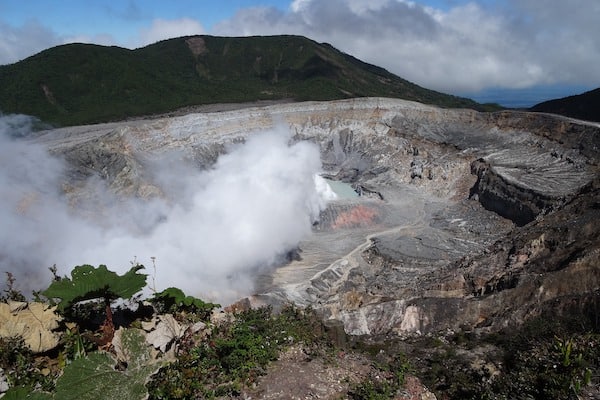COSTA RICA
Viewing a Volcano
By Heidi Meyer
Selma, NC, United States
The Poás Volcano overlooks 16,000 acres of land that make up the Poás Volcano National Park. The park is located in the Central Volcanic Conservation area in the Alajuela Province of Costa Rica. At 8,885 feet (2,708 meters) elevation, the Poás Volcano is currently one of the most active volcanoes in the country. It is over a mile wide and 900 feet deep, which makes it the second largest volcanic crater in the world. Because of its gas and ash eruptions, viewing the crater is frequently restricted for safety reasons.
The volcano has two crater lakes near its summit. One of them, called Laguna Caliente (“Hot Lake”), is more acidic than a car battery! Near its shoreline, acidic rain and fog prevent plants from surviving.
Visiting the Park
The National Park will take you about an hour and a half to drive the 50 kilometers from the capital city of San José. You can make the 68-mile (108 km) round-trip journey around the park to see waterfalls, coffee fields, and flower farms, as well as many different types of animal and plant life. Over 79 different species of birds live inside the protected zone of the park.
When you make the hike to view the main crater, you will see very little plant and animal life because of the acid rain its eruptions produce.
A View to Remember
The view of the volcano from its rim is spectacular. Steam breaks through geysers that explode into the air up to 820 feet (250 km) high. Laguna Caliente is a bright aquamarine blue that contrasts with the surrounding grey rock. The southern lake, Laguna Botos, fills a crater dormant for 7,000 years, so it rests quietly within a cloud forest.

Due to significant eruptions in April 2017, Poás National Park was closed. The gas and rock emissions caused damage to building and trails, which forced the government to shut down the park until August 2018. Although now reopened, access is strictly controlled, so visitors must purchase a ticket in advance in order to be allowed on the grounds.
Don’t worry about the volcano’s unpredictability, though. Refunds are offered if it decides to erupt!
Have a suggestion for this story? We’d love for you to submit it!


Blank
Blank
Slideshow
Are you a teacher who’s interested in telling this story to your students? Here’s a slideshow to get you started.
Math Resources
- In total elevation, how high above sea level can the steam from the tallest geyser explode into the sky?
- It takes an average person two hours to hike the trails around the park. Approximately how many miles of trails are there? How many meters? Feet?
Extension Questions
- People are used to water being blue. Why do you think the Laguna Caliente is such a greenish color?
- Do you think there will ever be a way to introduce marine life into either of the crater lakes? Explain your thinking.
Explore Further
- Webpage with general information
- Detailed facts and aerial images of eruptions
- News story about the April 2017 eruption
- Video of steam explosion
Share Your Story
Write your own Global Math Story and send it to us!
Sorry, the comment form is closed at this time.